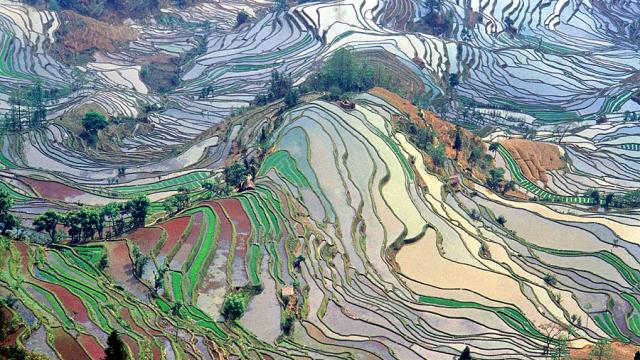Rice: It’s not just delicious, it’s also the building block of a large percentage of the world’s diet. But rice — and how we finally figured out how to domesticate it — is responsible for shaping a lot more than just what’s on our plates.
A new study published in Nature Plants by researchers from the University of Manchester, led by Peter Civán, looks at the origins of when rice was first domesticated by early peoples. In addition to the two origins of domesticated rice researchers had already proposed (indica, from the Brahmaputra valley, and japonica from the Yangtze valley), there was likely a third variety that originated completely separately, somewhere near central India and Bangladesh. The findings are the result of an in-depth forensic genetic analysis of modern rice varieties, traced back to the wild rice plants that started to be cultivated 10,000 years ago.
Why would rice springing up in three locations be a bigger deal than just two, or even one? It would be hard to overstate how significant the cultivation of rice was for ancient civilizations to form. Just like now, it was a staple crop for older civilizations, allowing them to put down roots and feed much larger populations than ever before.

Previous analyses had put the new aus varieties into the indica group, suggesting that they were simply hybrids and offshoots of the varieties that had been developed in the Brahmaputra valley. But if rice did indeed have a third, independent point of domestication, it could tell us a lot about both what was going on with those civilizations thousands of years ago and the level of contact they may have had with each other — especially when paired with information from archaeological digs.
This, however, is not just an academic debate over what once was; it also could have some implications for how we eat in the future.
The Future of Rice
Knowing where ancient rice crops were first developed gives us clues about how to look for some of rice’s more recent ancestors today. But why would someone want to find old rice plants? Because the genes of those very early rice plants could hold the solutions to some of our very modern food problems.
Our climate is changing and our population is growing. If a wild variety of rice had traits that could, perhaps, allow us to grow rice in warmer temperatures, let rice survive in drier conditions, or simply increase harvest yield, that could utterly transform the food security situation of billions of people.
This is why some plant geneticists have started to search for some of these old plants, to see if we can find any surviving plants from before domestication, and study their genetics. Because of the climate of the origination, researchers in the Nature paper have wondered if the wild aus varieties may have been especially good for drought resistance. What we find may end up being as important for surviving the future as it is for understanding the past.
Top image: Yunnan county rice fields in China / JialiangGao; Chart: Civán et al. / Nature Plants
